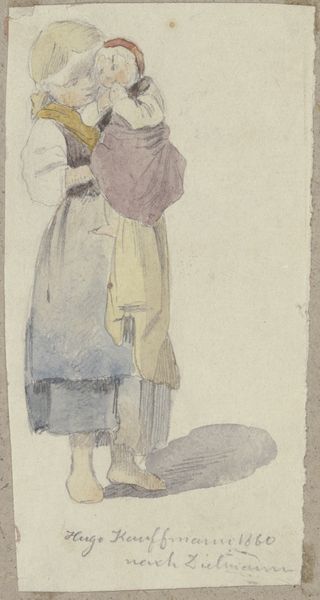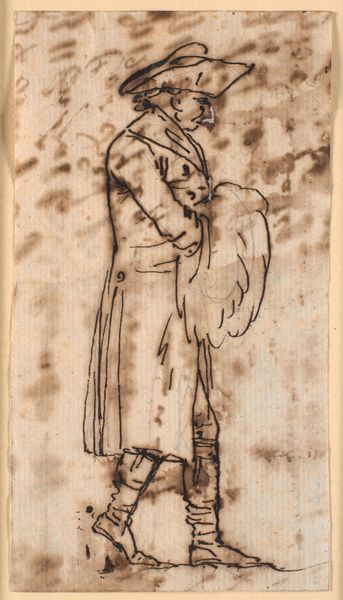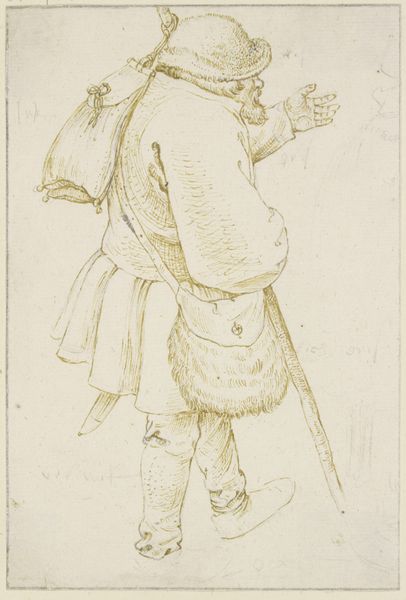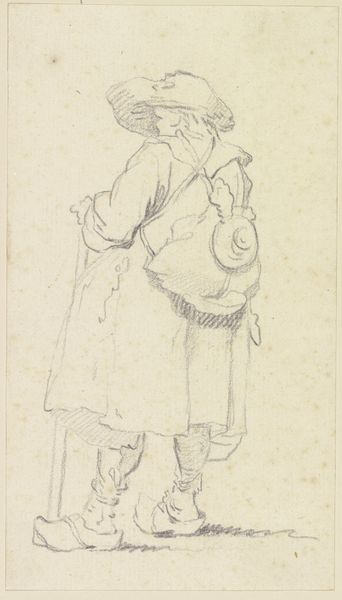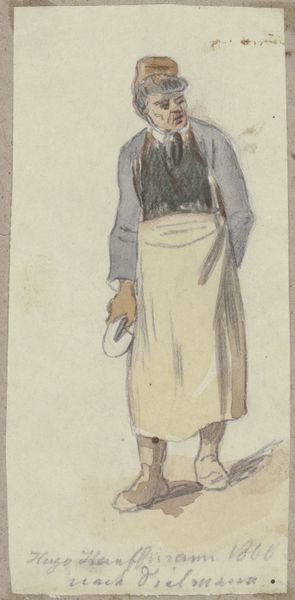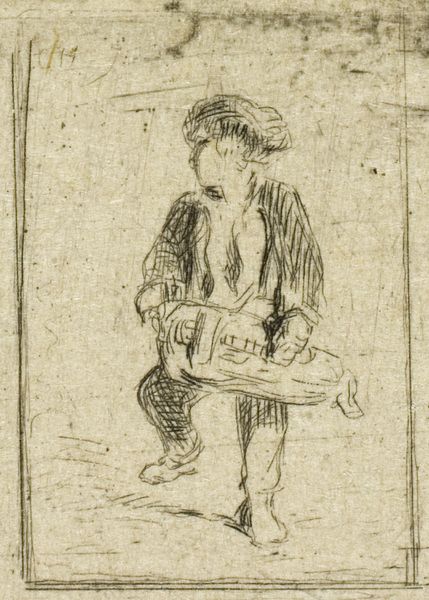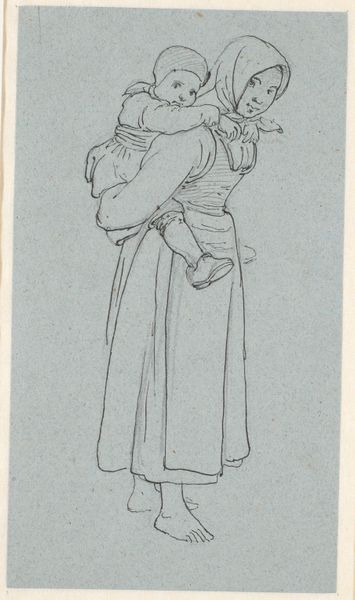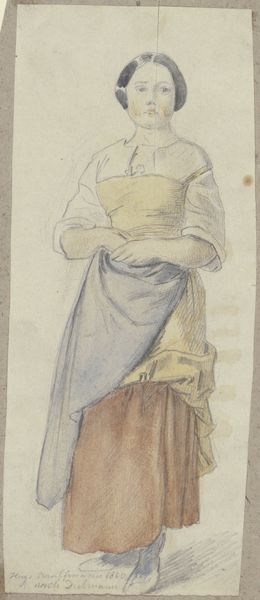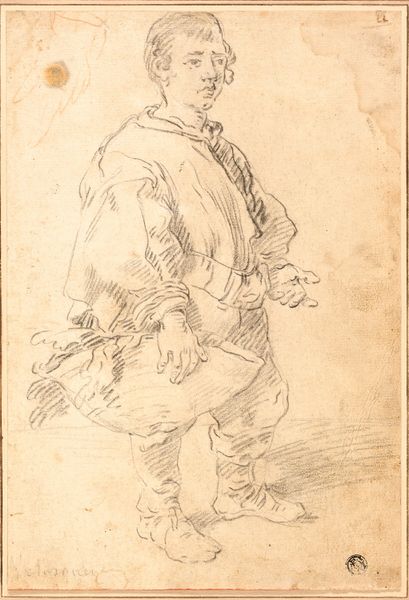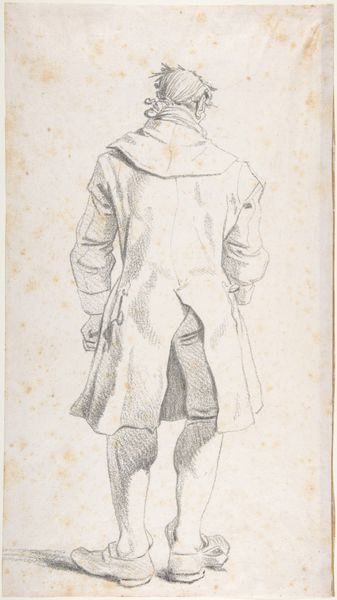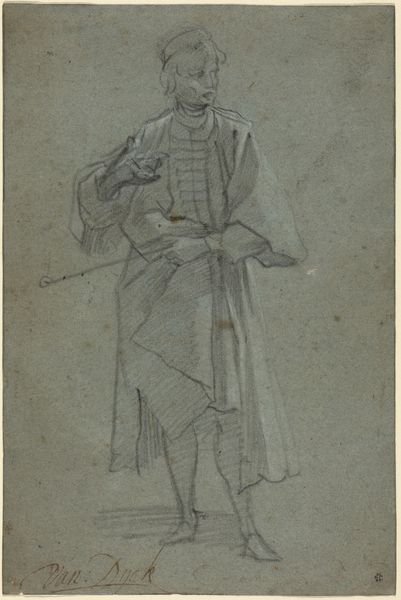
Copyright: Public Domain
Editor: This is "Farmer with child on his arm," a pencil and pastel drawing from 1860 by Hugo Kauffmann. The way he depicts the farmer's clothing seems really deliberate... What stands out to you? Curator: For me, it’s the visible labor inherent in the piece. We have pencil, pastel, paper - readily available, inexpensive materials for production of an image that depicts a member of the working class. How does the accessibility of materials influence the perception of the subject matter here? Editor: That’s interesting. It does seem to lend a sort of...authenticity? Like he's depicting someone from a similar economic reality. Curator: Exactly! Consider also the mass production and distribution of paper in the 19th century. It became a common material, moving image production beyond the realm of wealthy patrons. This work exists as both art object, but also as an index of material culture accessible and distributed through an increasingly industrialized society. What kind of message is delivered to his contemporary audience through this conscious material choice? Editor: So, the materials themselves become a comment on class and accessibility. I hadn't thought about it that way, that the paper itself would be making such a clear statement. Curator: Absolutely. And note the rapid sketch-like quality – this isn’t a polished academic painting. The very act of making echoes the rough reality it portrays. How does the drawing challenge traditional high art? Editor: I see what you mean. It is not this idealized or heroic image that one may have seen in grand history paintings. This has completely changed my perception of it. I now feel this piece offers social commentary through its deliberate choice of materials and technique. Curator: Precisely. It prompts us to consider art as a product embedded within a broader network of social and material conditions.
Comments
No comments
Be the first to comment and join the conversation on the ultimate creative platform.
